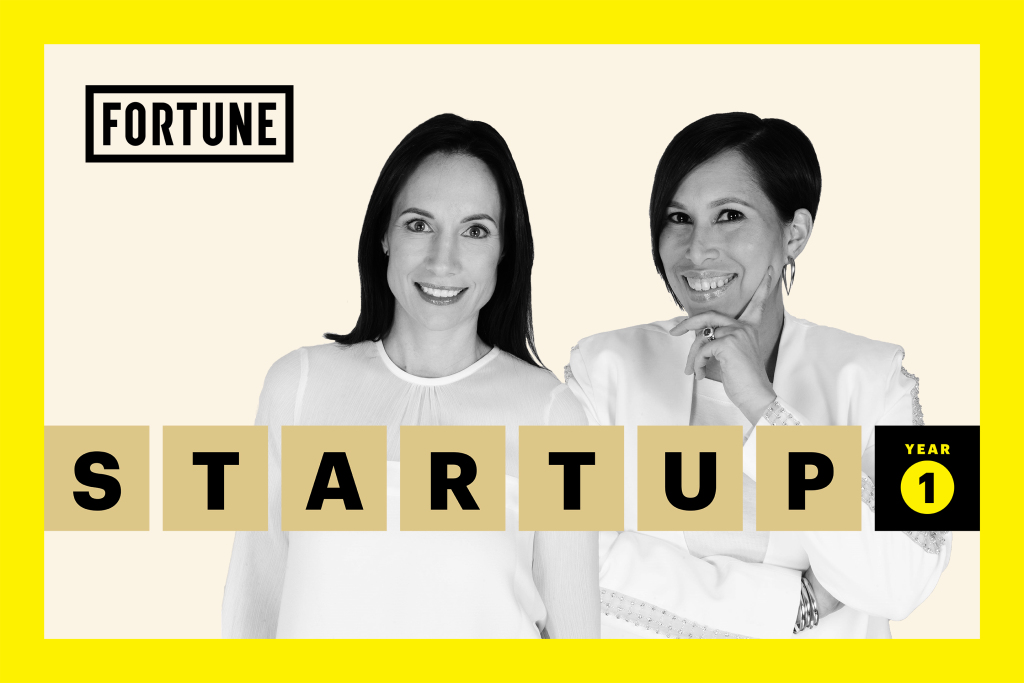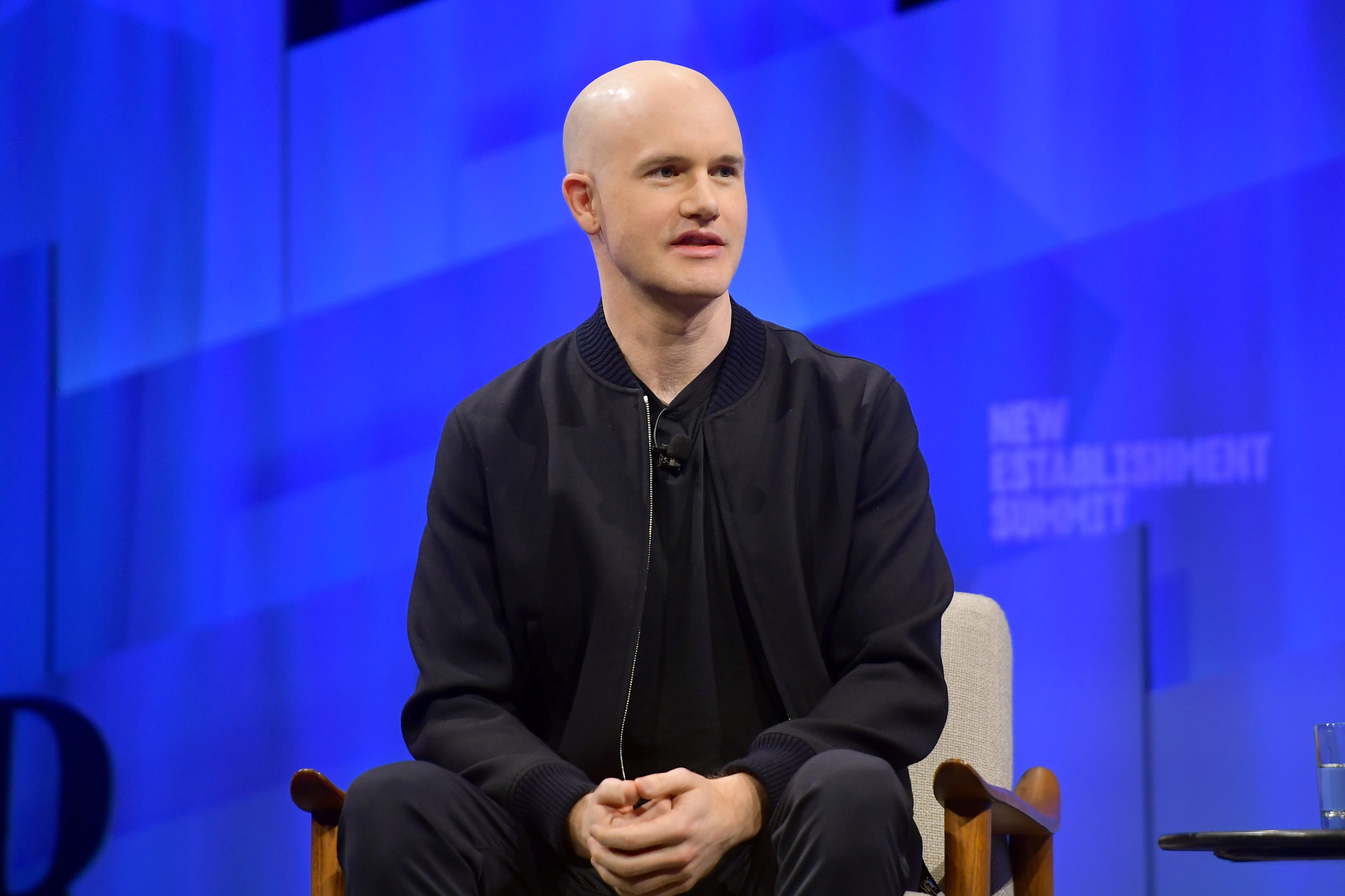Business
Changing the plant-based food industry one spoon at a time
Published
3 years agoon
By
Drew Simpson
This is an installment of Startup Year One, a special series of interviews with founders about the major lessons they have learned in the immediate aftermath of their businesses’ first year of operation.
Nydia Shipman and Sarah Renahan started the Worthy Company in 2018. As new moms, they were seeking a better eating experience that delivered plant-based nutrition in a portable format and at a reasonable price.
Their solution: the Worthy Bowl, a plant-based, fruit-forward, travel-friendly bowl made with superfood ingredients. And the Chicago-based, B Corp–certified company just finished launching the reformulated flavors last month.
Fortune recently spoke with cofounders Shipman and Renahan to learn more about their insights and predictions for their business and the plant-based food industry after a year in which grocery shopping was completely upended.
The following interview has been condensed and lightly edited for clarity.
Fortune: Could you share a bit about your backgrounds? What were you doing professionally prior to launching the Worthy Company?
Renahan: Prior to launching Worthy, I spent 15 years in luxury brand management and merchandising for Gucci, Salvatore Ferragamo, and Frette in New York City and Milan. As a lifelong athlete, current marathon runner, and student of yoga, performance-supporting yet delicious plant-based nutrition has been a personal obsession. Since becoming a mom to two young, very active boys, a deeper drive to support self-worth for all, particularly children, through a socially-minded food business, has become an equal obsession. Worthy was born to satisfy both.
Shipman: Prior to launching Worthy, I was a trial attorney representing Fortune 500 companies in NYC. I am an obsessive home cook and hail from a family of Latinx restaurateurs and foodies. I am passionate about my family and creating delicious and nutritious recipes for them, incorporating natural, plant-based ingredients that pay homage to my Caribbean roots. This passion for combining uncomplicated, nutritious, and satisfying ingredients with flair and a shared drive to support self-worth for all led me to cocreate Worthy with Sarah.
The plant-based diet and industry have skyrocketed in the past few years, but from a consumer perspective, there might be so many new options that it’s overwhelming. What inspired the launch of the Worthy Company? What went into the recipe development process?
Renahan: Despite the boom in plant-based offerings, as consumers, we saw a glaring white space in the market. And so the Worthy Company was born to solve a problem for ourselves and many others searching for a balanced, plant-based, ready-to-eat option that’s well priced and never sacrifices flavor. With no clean-up required! Who has time for another mess? We first made the bowls for ourselves in our kitchens because we wanted to eat something that was convenient, made with real fruits and vegetables, contained protein and fiber for gut health, and was ready to be devoured—with a spoon. Taste is queen, and we made sure these tasted great.
Shipman: Each Worthy Bowl is inspired by our favorite childhood treats and the ingredients our mothers and grandmothers cooked with regularly. Dark Cocoa Cherry was inspired by a chocolate cherry pie Sarah grew up eating. Strawberry & Greens was inspired by a strawberry rhubarb tart from Sarah’s childhood. Vanilla Orange was inspired by our love of Creamsicles and a drink very popular in the Caribbean, where I am from. Mango & Greens was inspired by my childhood growing up eating fresh mangoes with my family.
Renahan: What started as a recipe in our kitchens that went through many edits and changes has now grown into a movement to ensure plant-based nourishment is accessible to all and to encourage a global wave of self-worth. We are all worthy.
It’s noted that the Worthy Company’s bowls are travel-friendly. Who is the target audience, and what makes these bowls stand apart in the grocery aisle?
Shipman: We are obsessed with our customers, how they are making plants part of their diet, and where they are shopping. And we’re here for it. We are determined to be part of where and how our customers are eating, so we developed our Worthy Bowls to be travel-friendly. We know that 66% of 24- to 35-year-old adults say that health and wellness is important in on-the-go eating, and we want Worthy Bowls to be part of the solution. We know that our customers are 65% to 75% female, 25% to 35% male, and span a variety of age demographics from young millennials to middle-aged adults. They are socially conscious, focused on increased plant consumption, and lead active lives.
Part of our obsession is providing the best customer experience possible. We spent 2020 redesigning our packaging and communications with the branding firm Hatch in San Francisco. We love the bright modern colors and nod to earthy “old-school” ingredients in the redesign, and hope you’ll agree our new containers stand out on the shelf and screen.
Grocery shopping has become complicated, to say the least, during the pandemic. What has it been like working in the food retail market in the last year? How have e-commerce sales balanced out with wholesale partners?
Renahan: When COVID hit, we focused on and invested in wins, knowing retail and food service would lag for the near to medium term. With our strong direct-to-consumer business on Amazon growing only stronger during the pandemic, we felt confident investing in our direct-to-consumer, e-commerce website launch in July. It paid off: E-commerce repeat customers average between 32% and 40% per month; almost 40% of new customers trade up to larger pack sizes; and our subscription business is growing double digits month over month.
While the food retail market recalibrated, channels like Costco and QVC were exciting opportunities for Worthy, and we are thrilled to announce our launch in Costco in February 2021. Also, we’re fresh off a very successful debut on QVC. We have other similar launches in development.
COVID also presented opportunities for international expansion in Japan and Asia. Plant-based is exploding in the region, and we have plans in development to introduce Worthy in the market within the year. We have some key strategic partners in the region, and Worthy will be attending two key trade shows: the OEM/PB Development Exhibition and Foodex.
Domestic retail opportunities are back in full force for Worthy, and we’re excited to announce launches into strategic natural accounts soon.
Economic downturns often prove to be a fruitful time for startups that can fill a void. What has it been like to secure funding for the Worthy Company? Is it privately funded or backed by venture capital?
Renahan: From our inception, we have attracted incredible talent from across the industry, inspired by our Worthy movement: ensuring plant-based nourishment is accessible to all, and changing the world with the stir of a spoon. We have been honored to have highly engaged strategic advisers from the likes of Uber, Unilever, PepsiCo, and Coca-Cola. This has continued with our investors. We have leveraged our networks throughout our growth stages to bring in private investors from varied industries to join Worthy. We have not yet taken on any venture capital and don’t intend to do so until we reach our Series A.
Shipman: As a women-and-BIPOC–led company, we opened the Worthy GRACE community fund, a female-led organization bringing together investment opportunity and community, which is centered on inclusivity and action. With a minimum investment threshold of $5,000, accredited investors will have the unique opportunity to invest early in a movement-based company rapidly becoming a global brand. In turn, the GRACE fund creates an opportunity for Worthy to leverage best practices from a multitude of companies and industries by expanding our investor base to be inclusive and representative of the voices we all need to be hearing. Worthy will reserve portions of all subsequent raises for like initiatives. We’re proud the network to date includes a multinational group of powerful business leaders across industries.
Post-pandemic and five years down the road, where do you see the Worthy Company?
Shipman: Our vision is for the Worthy Company to be leading a movement to ensure plant-based nourishment is accessible to all. We want to continue to inspire a global wave of self-worth with nonprofit organizations like the amazing One Simple Wish and Graham Windham. We are so happy to be highlighting both organizations directly on our packaging for Costco.
Renahan: Our plant-based, Worthy nourishment offering will extend to multiple product lines for the entire family, with an omnichannel distribution obsessed with providing the best customer experience possible. We want the words “We’re All Worthy” to be synonymous with plant-based nourishment and self-worth for all.
More must-read lifestyle and entertainment coverage from Fortune:
- The 10 best business books of 2020
- Congress COVID-19 relief bill includes $15 billion for Broadway, small music venues, movie theaters
- “The Mozart of fungi”: For ages, truffle hunting has been one of the most challenging pursuits on earth. Then the pandemic hit
- From pet adoptions to DIY home improvement to sweatpants: 10 COVID-fueled consumer trends that will endure
- How Hawaii’s COVID-19 testing program could serve as the blueprint for a broader reopening of international travel

You may like
-


How carbon removal technology is like a time machine
-


How AI assistants are already changing the way code gets made
-


Users are doling out justice on a Chinese food delivery app
-


Climate tech is back—and this time, it can’t afford to fail
-


The businesses changing climate technology
-


How AI is Changing Data Management: Embracing the AI-Driven Automation Era
Business
Coinbase’s near-term outlook is ‘still grim’, JPMorgan says, while BofA is more positive about firm’s ability to face crypto winter
Published
2 years agoon
08/10/2022By
Drew Simpson
Coinbase is well positioned to successfully navigate this crypto winter and take market share, Bank of America said in a research report Tuesday. It maintained its buy recommendation following the exchange’s second-quarter results.
The results warrant “a muted stock reaction,” the report said. Net revenue of $803 million was below the bank’s and consensus estimates, while its adjusted $151 million loss before interest, tax, depreciation and amortization was better than the street expected. Importantly, the company remains “cautiously optimistic” it can reach its goal of no more than $500 million of adjusted EBITDA loss for the full year, the report added.
Coinbase shares fell almost 8% in premarket trading to $80.74.
Bank of America notes that Coinbase had no counterparty exposure to the crypto insolvencies witnessed in the second quarter. The company also has a “history of no credit losses from financing activities, holds customer assets 1:1, and any lending activity of customer crypto is at the discretion of the customer, with 100%+ collateral required.” These rigorous risk-management practices will be a “positive long-term differentiator” for the stock, the bank said.
JPMorgan said Coinbase had endured another challenging quarter, while noting some positives.
Trading volume and revenue were down materially. Subscription revenue was also lower, but would have been much worse were it not for higher interest rates, it said in a research report Wednesday.
The company is taking steps on expense management, and in addition to the June headcount reductions, is scaling back marketing and pausing some product investments, the note said.
The bank says the company’s near-term outlook is “still grim,” noting that the exchange expects a continued decline in 3Q 2022 monthly transacting users (MTUs) and trading volumes, but says Coinbase could take more “cost actions” if crypto prices fall further.
JPMorgan is less optimistic than Bank of America about the company in the near term, saying pressure on revenue from falling crypto markets will have a negative impact on the stock price. Still, it sees positives including higher interest rates, from which the firm will generate revenue. It also sees opportunities for the exchange to grow its user base, leveraging almost $6 billion of cash. The surge in crypto prices in July, and the forthcoming Ethereum Merge are also seen as positive catalysts, it added.
The bank maintained its neutral rating on the stock and raised its price target to $64 from $61.
Sign up for the Fortune Features email list so you don’t miss our biggest features, exclusive interviews, and investigations.
Business
Elon Musk sold $6.9B in Tesla stock in case he’s forced to buy Twitter
Published
2 years agoon
08/10/2022By
Drew Simpson
Elon Musk sold $6.9 billion of his shares in Tesla Inc., the billionaire’s biggest sale on record, saying he needed cash in case he is forced to go ahead with his aborted deal to buy Twitter Inc.
“In the (hopefully unlikely) event that Twitter forces this deal to close *and* some equity partners don’t come through, it is important to avoid an emergency sale of Tesla stock,” Musk tweeted late Tuesday after the sales were disclosed in a series of regulatory filings.
Asked by followers if he was done selling and would buy Tesla stock again if the $44 billion deal doesn’t close, Musk responded: “Yes.”
Yes.
In the (hopefully unlikely) event that Twitter forces this deal to close *and* some equity partners don’t come through, it is important to avoid an emergency sale of Tesla stock.
— Elon Musk (@elonmusk) August 10, 2022
Tesla’s chief executive officer offloaded about 7.92 million shares on Aug. 5, according to the new filings. The sale comes just four months after the world’s richest person said he had no further plans to sell Tesla shares after disposing of $8.5 billion of stock in the wake of his initial offer to buy Twitter.
Musk last month said he was terminating the agreement to buy the social network where he has more than 102 million followers and take it private, claiming the company has made “misleading representations” over the number of spam bots on the service. Twitter has since sued to force Musk to consummate the deal, and a trial in the Delaware Chancery Court has been set for October.
In May, Musk dropped plans to partially fund the purchase with a margin loan tied to his Tesla stake and increased the size of the equity component of the deal to $33.5 billion. He had previously announced that he secured $7.1 billion of equity commitments from investors including billionaire Larry Ellison, Sequoia Capital, and Binance.
“I’ll put the odds at 75% that he’s buying Twitter. I’m shocked,” said Gene Munster, a former technology analyst who’s now a managing partner at venture-capital firm Loup Ventures. “This is going to be a headwind for Tesla in the near term. In the long term, all that matters is deliveries and gross margin.”
At the weekend, Musk tweeted that if Twitter provided its method of sampling accounts to determine the number of bots and how they are confirmed to be real, “the deal should proceed on original terms.”
Good summary of the problem.
If Twitter simply provides their method of sampling 100 accounts and how they’re confirmed to be real, the deal should proceed on original terms.
However, if it turns out that their SEC filings are materially false, then it should not.
— Elon Musk (@elonmusk) August 6, 2022
Musk, 51, has now sold around $32 billion worth of stock in Tesla over the past 10 months. The disposals started in November after Musk, a prolific Twitter user, polled users of the platform on whether he should trim his stake. The purpose of the latest sales wasn’t immediately clear.
Tesla shares have risen about 35% from recent lows reached in May, though are still down about 20% this year.
With a $250.2 billion fortune, Musk is the world’s richest person, according to the Bloomberg Billionaires Index, but his wealth has fallen around $20 billion this year as Tesla shares declined.
Sign up for the Fortune Features email list so you don’t miss our biggest features, exclusive interviews, and investigations.
Business
The rent is too d*mn high for Gen Z: Younger generations are ‘squeezed the most’ by higher rents, BofA says
Published
2 years agoon
08/09/2022By
Drew Simpson
Most of Gen Z is too young to remember the 2010 New York gubernatorial candidate Jimmy McMillan.
But over a decade later, they would probably agree with his signature issue (and catchphrase): the rent is too damn high.
This July, median rent payments were 7.4% higher than during the same period last year, according to a Bank of America report released Tuesday.
The national median price for a one-bedroom apartment has been hitting new highs nearly every month this summer. It was $1,450 for July, according to rental platform Zumper. In the country’s largest city, New York, average rent exceeded a shocking $5,000 a month for the first time ever in June.
But inflation in the rental market hasn’t hit each generation equally, and no one is getting squeezed harder by the higher monthly payments as Gen Z. Those born after 1996 have seen their median rent payment go up 16% since last July, compared to just a 3% increase for Baby Boomers, BofA internal data shows.
“Younger consumers are getting squeezed the most by higher rent inflation,” BofA wrote.
The great rent comeback
Early in the pandemic, landlords slashed rents and gave significant COVID discounts to entice tenants to stay instead of leaving urban areas. Once those deals started expiring in 2021, many landlords suddenly raised payments once again, sometimes asking for over double their pandemic value.
Young people across the board have been hit hard, and rent burdens compared to age can be seen even within a single generation. Younger millennials had their median rent payment grow 11% from last year, while the median payment for older millennials rose 7%. Gen X experienced a 5% median rent increase, according to BofA.
It’s not a surprise, then, that Gen Z feels so strapped for cash. The majority of young people, 61%, said they want to receive their wages daily instead of twice a week, a practice typically reserved for workers living paycheck to paycheck, according to a report from the Center for Generational Kinetics, which specializes in research across the generations. Rising rent inflation has even priced nearly a third of Gen Zers out of the apartment search altogether. Around 29% of them have resorted to living at home as a “long-term housing solution,” according to a June survey from personal finance company Credit Karma.
It’s no wonder—the rent really is too high.
Sign up for the Fortune Features email list so you don’t miss our biggest features, exclusive interviews, and investigations.